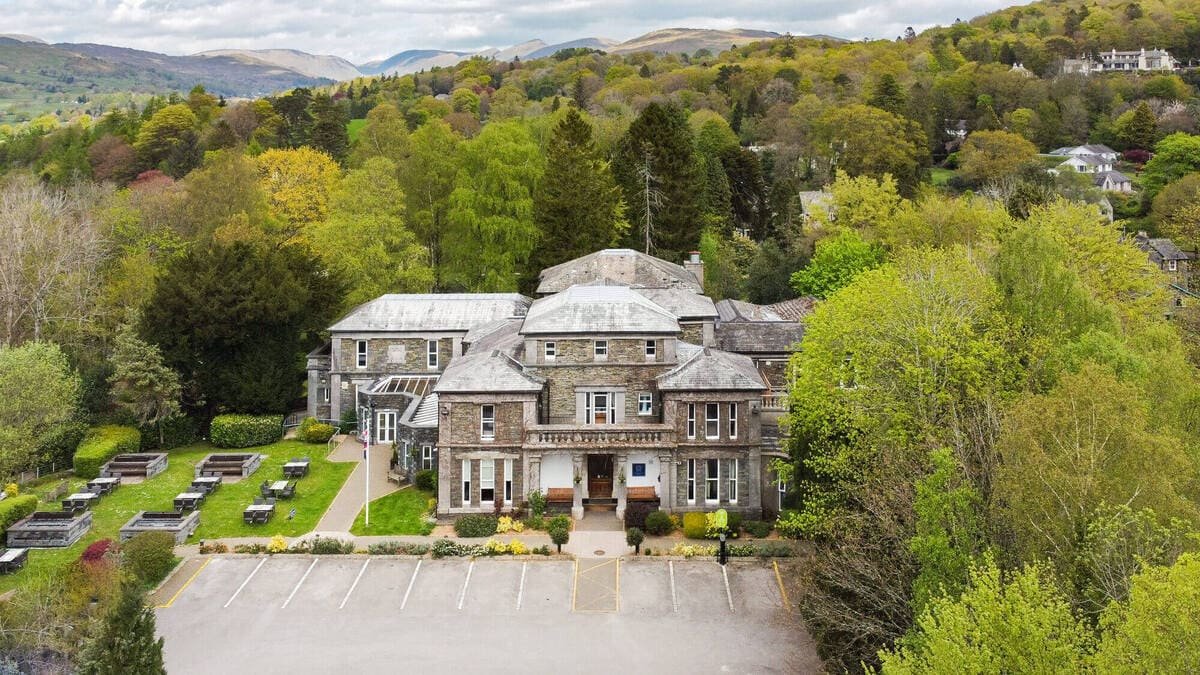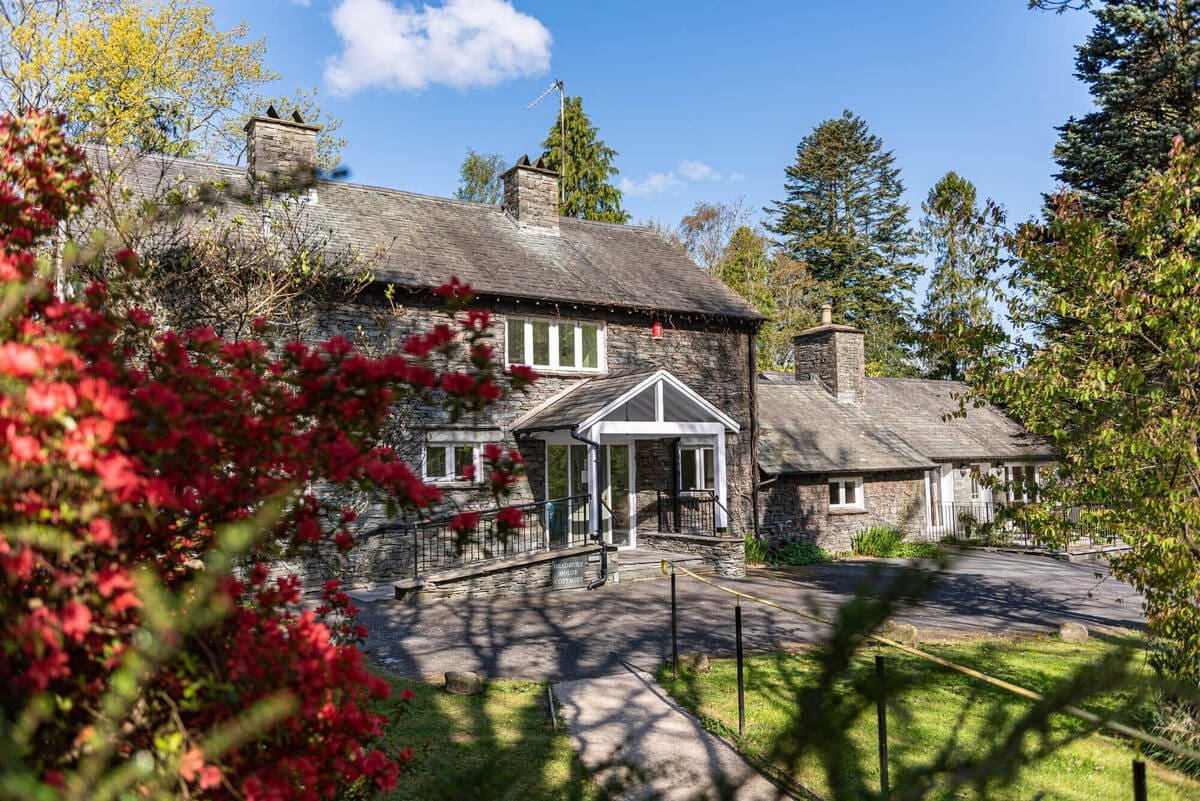A potted history of Windermere Manor
Windermere Manor was originally called “Hammerbank” and was built in the 1850’s as the home of Hubert and Mary Coutts.
The west wing of the building (lakeside) has a monogram in the wall, HM, the first initials of Hubert and Mary and the date 1897.
At that time, it occupied a much larger site than it does today, and within the extensive grounds there were a coach house, stables, orchards and vegetable gardens. Access was via a sweeping gravel drive through the grounds lined with yew and beech trees, and a stream and a tarn added to the landscape.
Following the Victorian trend, the grounds were extensively planted with exotic conifers, cedars and redwoods, some of which still stand today, and do block out what must have been one of the best views of the lake in the area.
Home to Hubert & Mary Coutts
Local Historians believe the house originally had six bedrooms, all accessed via the pitch pine paneled stairway, with the servants accommodated in the attic.
In 1897, an extra wing was added to the building which became the family chapel.
Although this is now the dining room, there are still reminders of what the original room was originally used for, with two pews beneath some small stained-glass windows, a further pew at the back and timbered ceiling complete with vaults and arches. Unusually the alter recess houses a Victorian fire place with a copper surround and hood, and ceramic tiling. It is believed that this was a latter addition when the chapel was used as a billiards room.
The original part of the house comprised the main entrance, the library to the right which is now reception and offices, and the drawing room to the left of the entrance as it still is today. What is now the bar was the main dining room, with kitchens behind.
Hubert Coutts
Hubert Coutts (1851-1921) was a water colour artist of some reputation and was one of the founder members of the Lake Artists Society in 1904 and became their first President.
It is thought that in the Second World War, the house was offered to the government as a convalescence home for wounded troops. After the war, Hammerbank was bought by Earl Peel who donated the house and it’s grounds to the Lancashire Association of Boys Clubs in 1938 to use as a holiday and training centre. It remained with the association until it was sold to a property developer in 1987. The original Hammerbank name board is currently displayed in the Lancashire Boys & Girls Club entrance in Lancaster. The original “dinner gong” is now housed at their smaller residential centre, Ormside Mill in Appleby-in-Westmoreland.
The annex - Bradbury Cottage
In the early 1990’s Hammerbank became a private nursing home and was then bought by Guide Dogs for the Blind Association, having stood empty for some time. In 1996, after extensive renovations of the house and grounds, expanding the number of bedrooms to 18, it was opened as a second hotel for Guide Dog Owners. An adjoining house, Low Brandle Howe, was purchased along with its grounds, to add space for dog runs and the hotel and grounds now cover three and a half acres.
A previous owner of Low Brandle Howe had been a wealthy aficionado of motorbike scrambling, who built a huge triple garage to house his collection.
In 1996, the swimming pool was added before the hotel officially opened, set under a side lawn, and invisible except from below.
In 2001 the operation of the hotel was given to Action for Blind People who expanded the number of bedrooms to 28. The conservatory was also added to provide additional public space. Low Brandle Howe was converted from a 4-bedroom cottage with double garage to 7 modern superior rooms and named Bradbury Cottages. The conversion started in May 2011 and the rooms opened on 24th July 2011.
Towards the end of 2016, Action for Blind People decided to cease operating hotels and would concentrate on their core services. Following discussions with the hotels owners, Guide Dogs for the Blind, the hotel was put up for sale and a period of uncertainty began. On 1st April 2017, Action for Blind People merged fully into the RNIB who then continued to operate the hotel during the sale process.
On the 30th November 2017, the hotel changed hands and is now owned and operated by Starboard Hotels, who are a family business with hotels throughout the UK and who have pledged to continue, enhance and embrace the services for Blind and Partially Sighted guests, including looking at how to expand services in their other properties. Thus started a new era for Windermere Manor, in the long tale of this amazing property.







